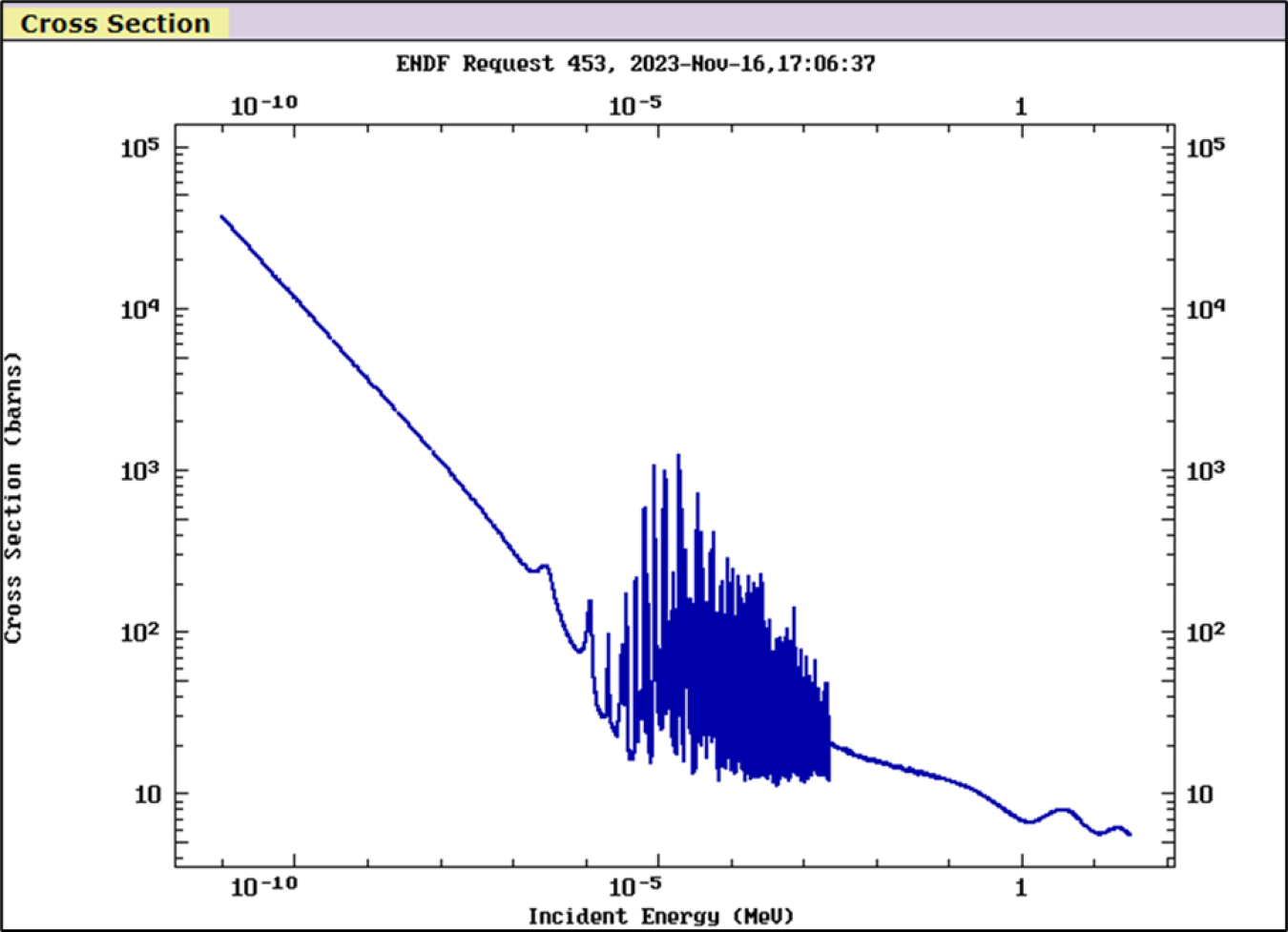
Nuclear data is all the information that scientists need on the structure of atomic nuclei and how they can interact. It focuses on how nuclei undergo radioactive decay. It includes how nuclei behave in fission and fusion reactions. It also includes the energy nuclei emit and how their subatomic particles behave. Scientists obtain this information from experiments and from theory, which fills in the gaps in experimental data.
Nuclear data traces its roots to 1939, when physicists Lise Meitner and Otto Frisch published their discovery that atomic nuclei split during uranium fission reactions. This process was called fission. This was one of the key points in the development of today’s nuclear science. Nuclear data then became an important part of the Manhattan Project as researchers worked to optimize the forces involved with nuclear fission. The United States established a formal nuclear data program in the 1960s. The program celebrated its 50th anniversary in 2018.
DOE Office of Science: Contributions to Nuclear Data
The Department of Energy (DOE) Office of Science, Office of Nuclear Physics supports research to understand all forms of nuclear matter. One part of this effort is the U.S. Nuclear Data Program (USNDP). The USNDP is a collaboration of national laboratories and universities that works to collect, evaluate, and update data libraries with the latest information on nuclear structure, decay, and reactions. The DOE Office of Nuclear Physics chairs the Nuclear Data Interagency Working Group (NDIAWG), which meets regularly to discuss nuclear data needs among federal programs. The NDIAWG also sponsors the Nuclear Data Working Group (NDWG), which consists of national laboratory and university researchers who coordinate and collaborate on research to address the federal needs. NDWG organizes the annual Workshop on Applied Nuclear Data Activities, where scientists identify and target opportunities for improved nuclear data for nuclear science and applications.
Nuclear Data Facts
- Nuclear data underlies the software scientists use to model and simulate nuclear systems. This means scientists need up-to-date and accurate data to get reliable results.
- Scientists use nuclear data for applications including basic nuclear science, nuclear non-proliferation, space exploration, nuclear energy production (from both fission and fusion), and medicine.
- The National Nuclear Data Center (NNDC) collects, evaluates, and disseminates nuclear physics data for basic nuclear research and applied nuclear technologies. The site’s libraries received more than 10 million hits from users worldwide in 2022, highlighting its importance in the global nuclear science community.
- The NNDC is an Office of Science Public Reusable Research (PuRe) Data Resource, highlighting its importance to the nuclear science community
Resources
- The DOE Office of Science’s Nuclear Physics program
- DOE Office of Science Nuclear Physics program’s research on nuclear data
- The National Nuclear Data Center
- The U.S. Nuclear Data Program
- Nuclear Data Working Group’s workshops and reports
- The Nuclear Science Advisory Committee's 2023 Long Range Plan for Nuclear Science, which includes plans for nuclear data.
Scientific terms can be confusing. DOE Explains offers straightforward explanations of key words and concepts in fundamental science. It also describes how these concepts apply to the work that the Department of Energy’s Office of Science conducts as it helps the United States excel in research across the scientific spectrum.

